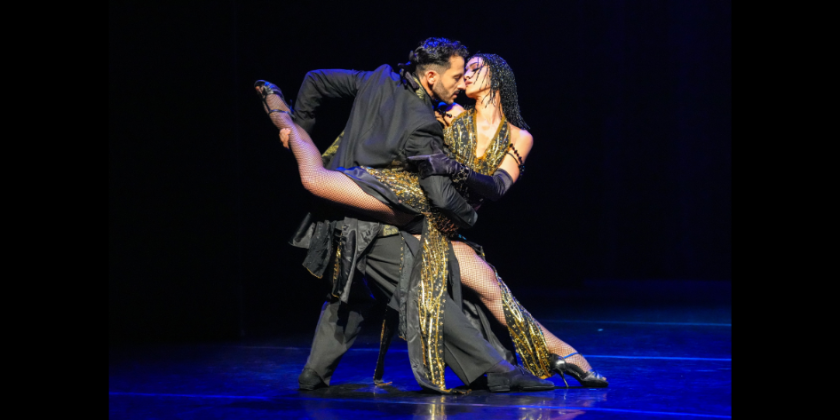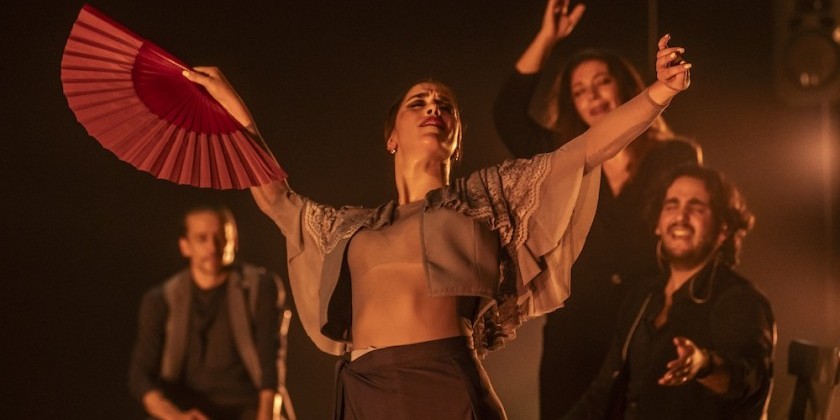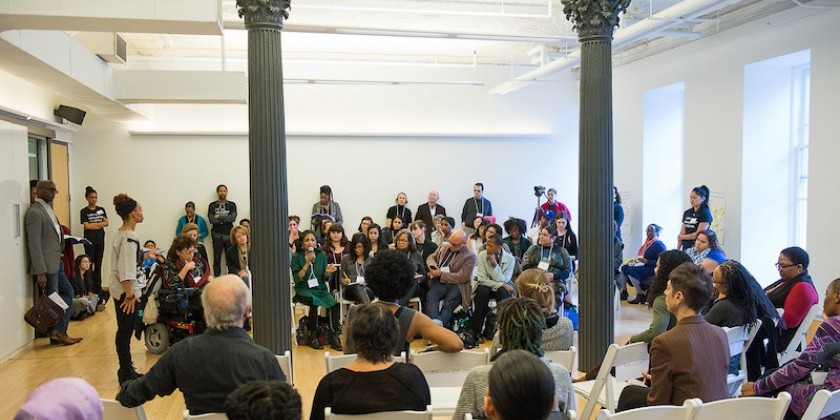IMPRESSIONS: Armitage Gone! Dance

Armitage Gone! Wild
Mechanics of the Dance Machine
Choreographer: Karole Armitage
Performers: Ahmaud Culver, Megumi Eda, Daniel LaMont Moore, Abbey Roesner, Lourdes Rodriguez, Jeffrey C. Sousa, Emily Wagner, Masayo Yamaguchi, Charles Askegard, Cristian Laverde König, Emma Clarke, Victory Chen, Zultari Gomez, Manuela di Martino, Caroline Yost
Costumes by: Alba Clemente and Deanna Berg MacLean
Lighting design by: Clifton Taylor
Presented at New York Live Arts
January 31 – February 2, February 7-9 at 7:30pm
February 6, 2012
Garnet Henderson for The Dance Enthusiast
Upon entering the theater to see Armitage Gone! Dance in Mechanics of the Dance Machine, audience members are greeted by a stage lit in eerie, electric red - so bright it is nearly impossible to look at. The light, reflecting off the stage and hanging like a fog in the room, creates a moody atmosphere that remains throughout the piece.
Choreographer, Karole Armitage seems bent on showing off her dancers’ technical prowess, and displaying the human body literally stretched to its limits. The dancers in next-to-nothing costumes (men in short, tight trunks and women in nude bras and underwear with red accents) glare out aggressively, possibly trying to project eroticism. Their movement exhibits feat after feat of flexibility and strength as they kick their legs, and twist themselves into gravity-defying arabesques and balances that fly by at maximum speed. At times the hyper-speed and aggressive execution do the dancers and the choreography a disservice. Although nearly every muscle on every body is exposed, we miss elegant articulations.
 |
| Mechanics of The Dance Machine, Choreography Karole Armitage Photo © Yi-Chun Wu; Dancers Abbey Roesner and Cristian Laverde König |
Mechanics of the Dance Machine consists of vignettes, the start and end of which are signaled by changes in music and lighting. Between each scene, the lights dim to a barely-there red glow, and when the action starts up again squares and columns of white light appear to change the visual landscape. Though the lights evolve with precision and create a refreshing rhythm, this design is not enough to connect or separate the vignettes. The vignettes are connected in the sense that they happen one after the other, and that they involve the same cast in the same costumes, but they are thematically disjointed- disparate parts of a whole that blur or collapse before fully realized.
When Masayo Yamaguchi and Jeffrey Sousa break off for a playful duet, their enthusiasm is tangible if slightly out of place. After being stared down by so many dancers who seem determined to intimidate the audience, it is odd to glimpse a smile and a lilting step. The one dancer who manages to really break the homogenous mold is Megumi Eda. In solos, duets, and group sections, she finds moments of suspension and release, daring to inject fluidity and calm into the jarring structure.
 |
| Mechanics of The Dancing Machine; Choreography, Karole Armitage; Photo ©Yi-ChunWu; Dancers, Daniel LaMont Moore and Abbey Roesner (foreground) |
The work features extensive partnering, nearly always between heterosexual couples. The dancers manipulate each other, often violently, jerking and pulling at each other’s limbs and encouraging on another other into difficult contortions. Their aggressiveness coupled with so much bare skin suggests sexual violence. It is shocking at first, and then becomes disturbingly repetitive. Sometimes, a few dancers stop along the side of the stage, holding regal, yet broken poses. It is unclear whether they are watching their peers, or simply acting as furniture. Soon they become an afterthought.
.jpg) |
| Mechanics of the Dance Machine; Choreography, Karole Armitage; Photo ©Yi-ChunWu; Dancers, Members of Armitage Gone! Dance |
In a short introductory speech before the show, Ms. Armitage explained that her initial idea was to have audience members join the dancers on stage. Once she saw the space, she said, and realized how intimate it was, she abandoned that plan. She remarked that this theater in particular is a prime space for voyeurism, a prospect enhanced by the fact that the dancers appeared almost naked.
New York Live Arts’ Bessie Schonberg Theater does place viewers – or, perhaps, voyeurs – quite close to the dancers, and it is always possible as an audience member to choose where to direct one’s eye. But it was impossible not to wonder if the piece might have been more interesting had Armitage followed her original plan.
Perhaps the dancing would have seemed less robotic and more varied if each viewer had been able to manipulate the angle and position of their view.
Or, on the other hand, maybe Armitage was going for that automaton quality – her title was, after all, Mechanics of the Dance Machine.
 |
| Mechanics of the Dancing Machine; Choreography; Karole Armitage; Photo ©Yi-Chun Wu ; Dancers, Members of Armitage Gone! Dance, Cristian Laverde König (Foreground) |















